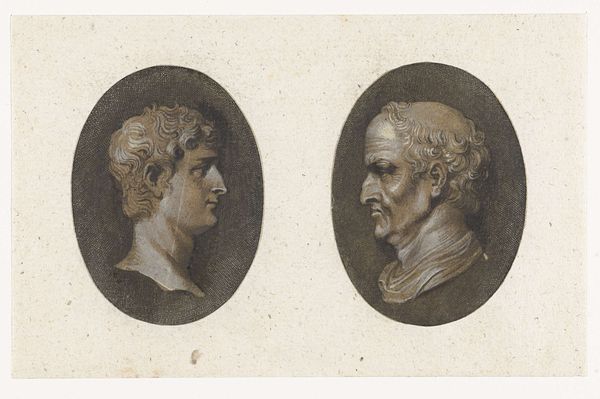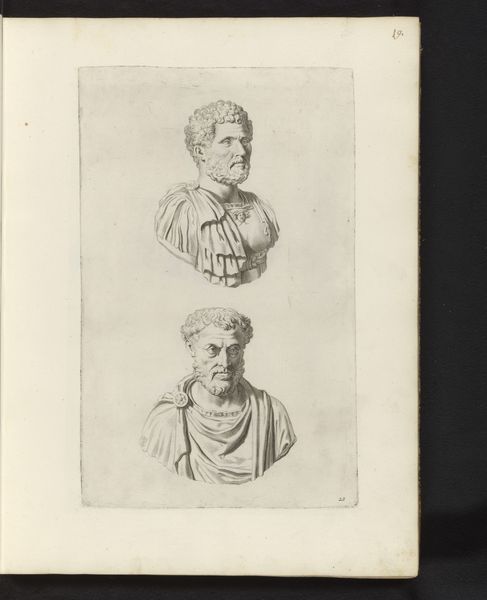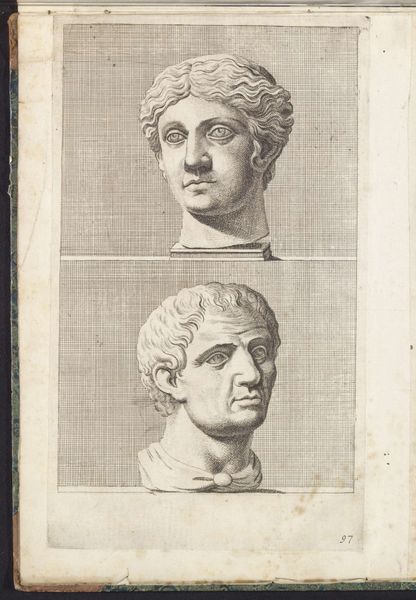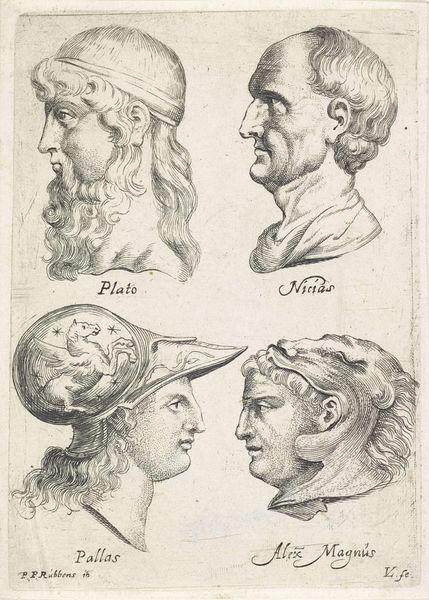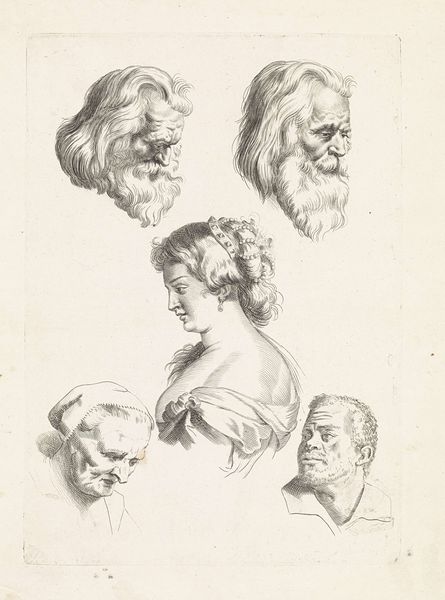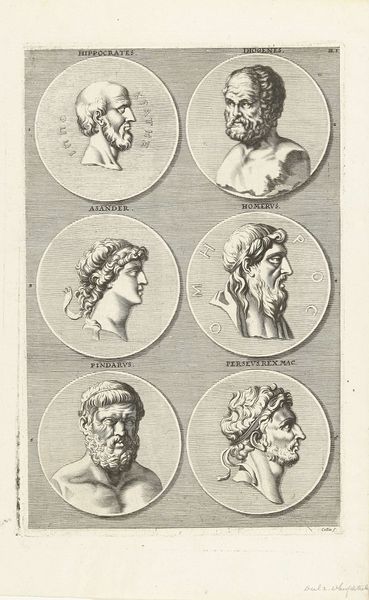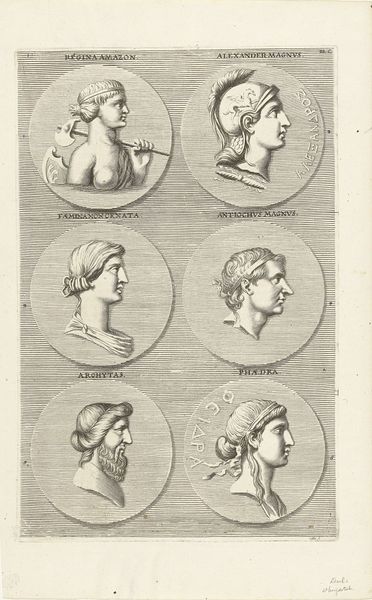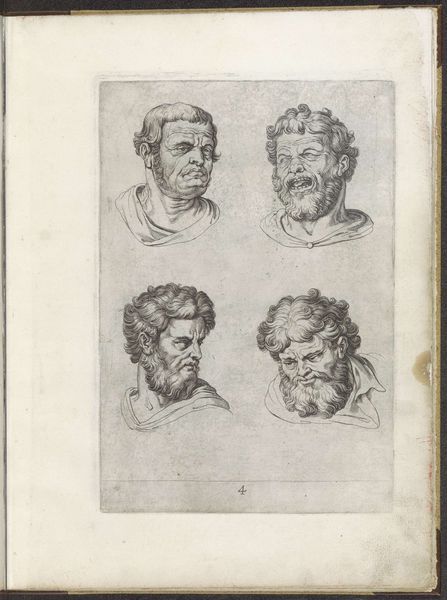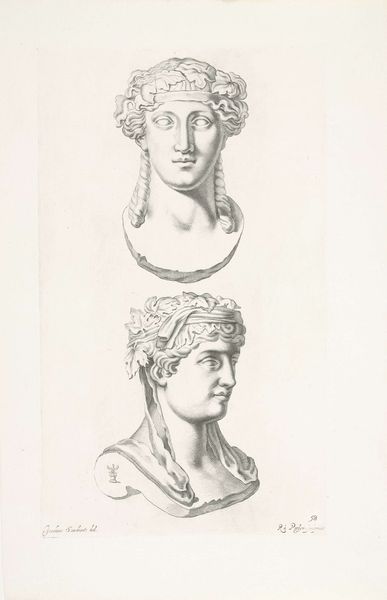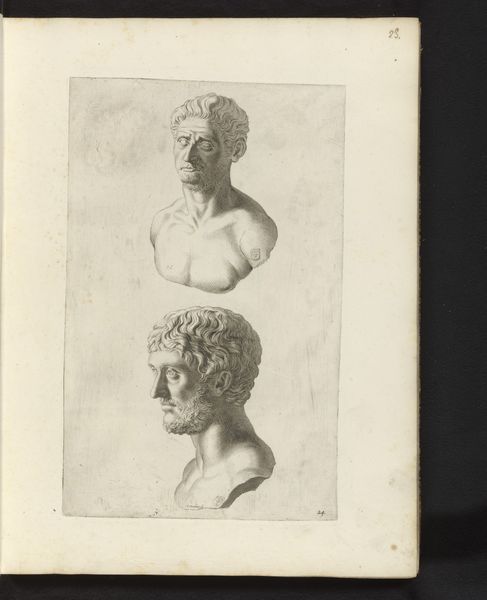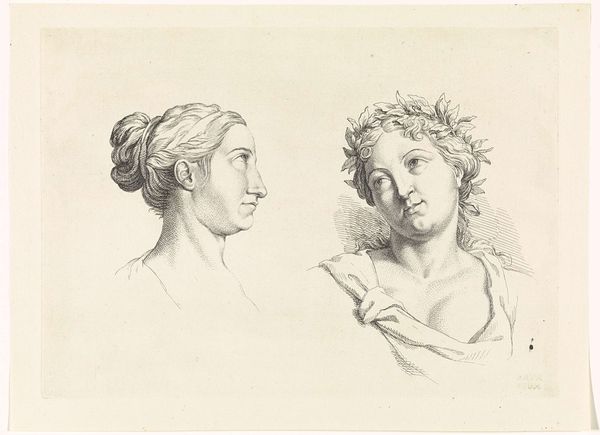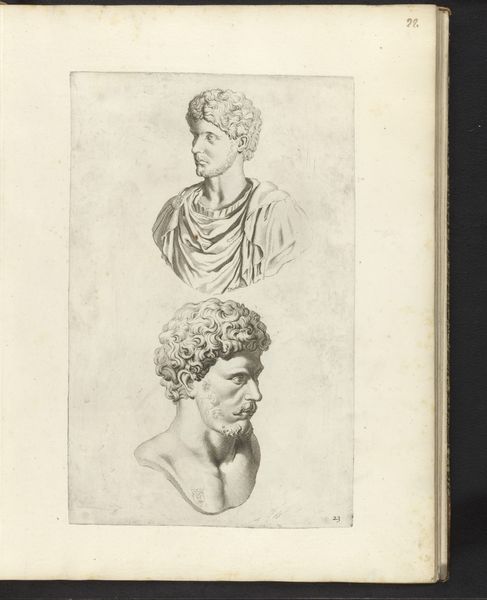
print, engraving
#
portrait
#
baroque
# print
#
classical-realism
#
figuration
#
history-painting
#
academic-art
#
engraving
Dimensions: height 158 mm, width 128 mm
Copyright: Rijks Museum: Open Domain
Editor: We’re looking at "Four Antique Busts," an engraving by Lucas Vorsterman I, dating from between 1635 and 1640. I’m struck by how…austere they seem, even though they depict important historical figures. What's your take on this, Professor? Curator: Well, it’s important to remember that prints like this one circulated within a specific social and intellectual environment. This wasn’t mass media; this was a way for the educated elite to engage with the past. Consider where this would have been displayed—likely in a library or study, a space of intellectual pursuit. Editor: So, less about aesthetics and more about... validation? Curator: Precisely! Engravings like this served as visual reminders of classical virtues and ideals, used to legitimize their own positions in society by aligning themselves with the authority of antiquity. Notice how they’re labeled: Germanicus Caesar, C. Caesar Augustus Nepos, Solon, Socrates... These aren't just portraits, they're carefully chosen historical precedents. Why these four figures together, do you think? Editor: The Caesars are there to show imperial lineage, the power of the ruling elite, but Solon and Socrates complicate it. They’re philosophers, thinkers…so is it about wisdom legitimizing power? Curator: That’s a great way to put it. And the *style* is important too. It’s not about realistic representation, but a kind of idealization, meant to communicate certain attributes. Editor: It’s fascinating how a print, seemingly simple, can tell us so much about power and influence at the time. Curator: Absolutely. The politics of imagery is often more complex than it appears on the surface, and context is everything. Editor: Definitely given me something to think about. Thanks for sharing your insights!
Comments
No comments
Be the first to comment and join the conversation on the ultimate creative platform.
